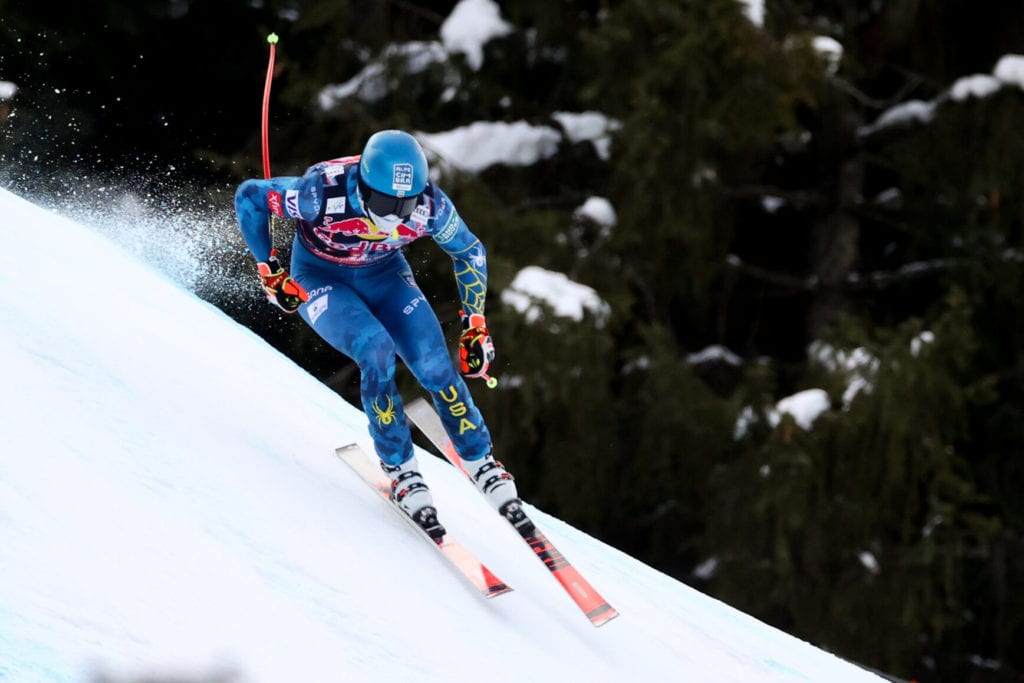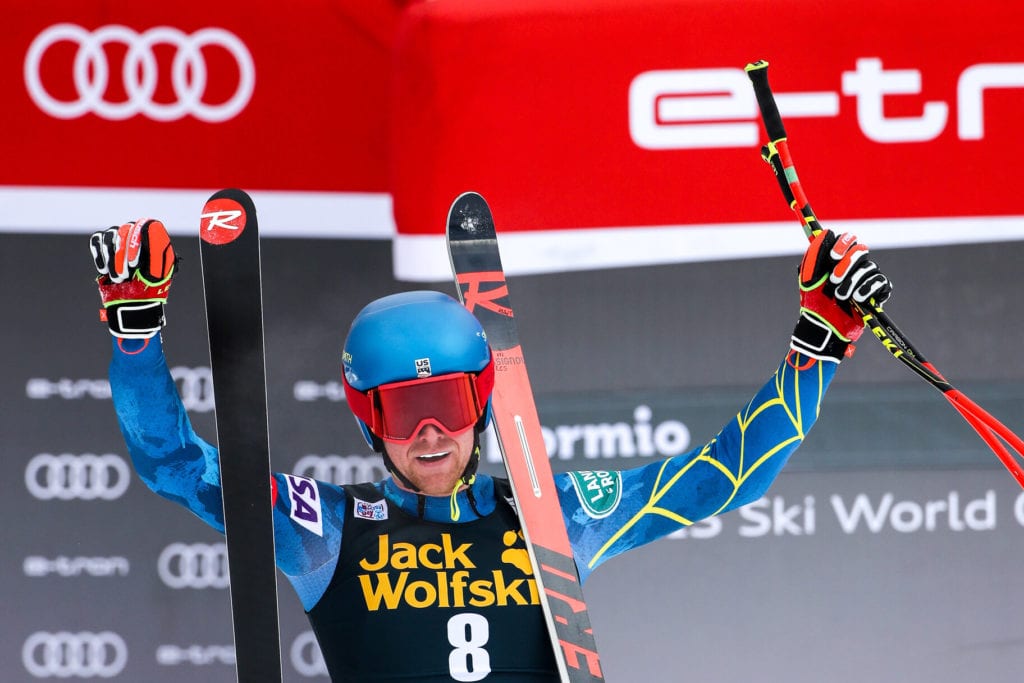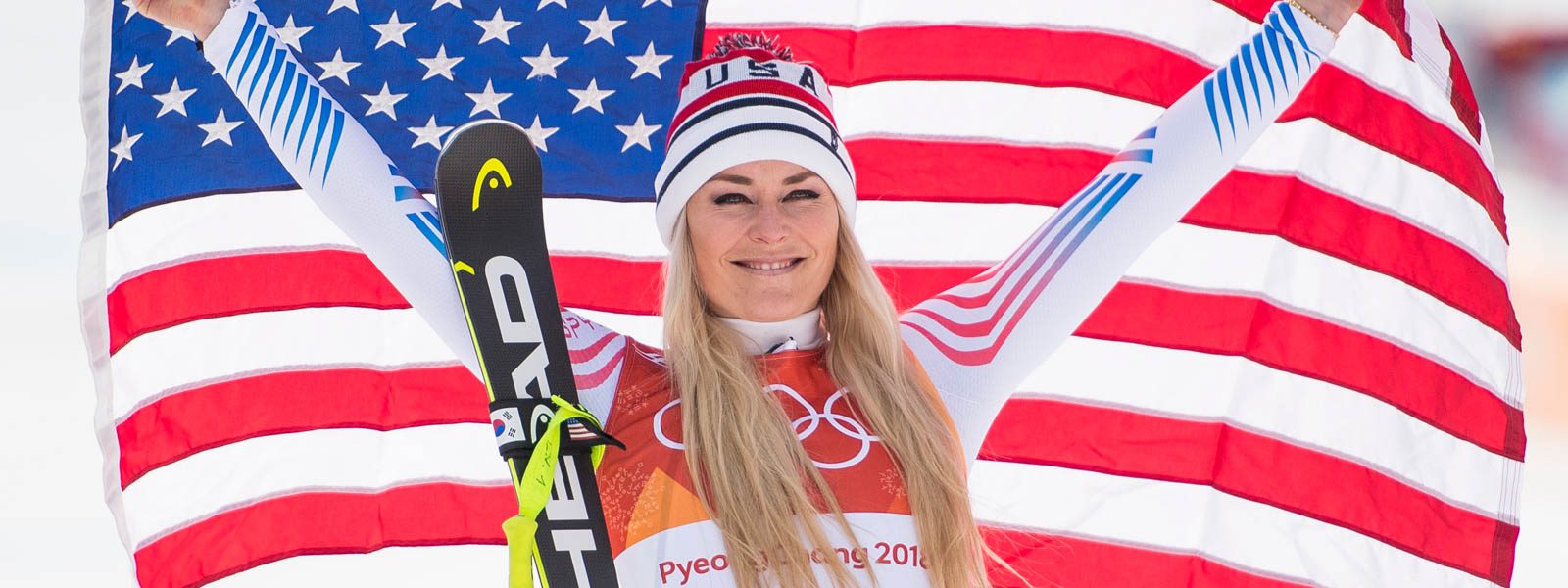Back in control: Ryan Cochran-Siegle returns to snow
The 2020-21 season threw its fair share of curveballs at the U.S. Ski Team, from COVID-19 restrictions and challenges to an unfortunate string of high-profile injuries. Among them was 29-year-old Ryan Cochran-Siegle, who was sidelined — literally — in dramatic fashion when he crashed into the nets approaching the finish of what would have been his career-first completion of the Hahnenkamm downhill. The crash ended prematurely what was undoubtedly the best season of his career, but after a successful neck surgery and refreshed mentality, Cochran-Siegle has returned to snow at Mammoth Mountain in preparation for the upcoming Olympic winter.
The crash
Cochran-Siegle was one of the American favorites approaching the world championships in Cortina this year. In just two short months racing the World Cup speed circuit, he progressed from top 10, to the podium, and onto his first World Cup victory in Bormio.
When Cochran-Siegle pushed out of the start gate of the Kitzbühel downhill on January 22, he had already clocked the fastest run in training days prior, but on race day, he lost control and was projected into the nets. The result: a C7 fracture in his neck.
The comeback
After returning to the States, Cochran-Siegle underwent a successful neck fusion securing the C6 and C7 together and replacing the cervical disc between the two. His doctor expects a full recovery without any limitations on his neck movement after regaining full range of motion.
“It’s not like a lower leg extremity where I’ll be restricted and building something entirely new,” Cochran-Siegle said in a conversation with SRM. “The foundation of my body is still where it was prior to my injury. I feel I can still come back to that level I was capable of before (the injury).”
The majority of his recovery was based on strengthening the surrounding areas of his neck while increasing mobility. For someone who often spends more than 50% of their race in a tight, aerodynamic tuck, regaining neck extension and 360-degree mobility is fundamental to returning to the sport at the same level pre-injury. Cochran-Siegle sought physical therapy twice a week, initially building his range of motion and then moving back into daily movements. While still experiencing stiffness and some mobility in his current state, doctors gave him the green light to return to snow. One caveat: no crashes, and he couldn’t push himself to the point where one would be at risk.
Making adjustments
Cochran-Siegle recently traveled to Mammoth Mountain with the speed team to start his progression back to snow. While he will spend the first of his days alongside his teammates working on free-skiing and drill progressions, he will stick to the sidelines while the team returns to gates.
Prior to the crash, Cochran-Siegle was skiing at a level he worked his entire career to achieve. Being forced away from the sport due to injury has turned his focus toward making daily improvements to getting back to that same state. While he doesn’t anticipate being in gates until the intensive summer training camps in August, Cochran-Siegle knows getting back on snow is one step closer in the progression.
“Being on snow, I think you adapt physically to those demands again,” he said. “There are a few things I can focus on to make it beneficial. When you’re forced off snow, for weeks or months, you always greatly appreciate being back there.”

While he feels optimistic about his return to snow and the prep period ahead of the Olympic season, Cochran-Siegle also knows that in addition to recovering from his injury he needs to address what led to it. He describes how there were several instances leading up to the crash where he would let his skis get away from him and feel out of control. Many times he was lucky to pull together a recovery. In Kitzbühel, he wasn’t.
“That’s essentially what led to my injury, I just wasn’t in control the way I needed to be,” said Cochran-Siegle. “When I come back it’s trying to address my body position over the ski and being in a good, strong, athletic position to dictate the turn, rather than be dictated by the turn.”
Conscious of the consequences
There is harmony between being in control and being fast, he says. Cochran-Siegle has found that, in order for him to be the fastest, he needs to let go but still hold on enough to make it to the finish line. Part of that control comes in addressing his tactics and assessing the high-risk areas of a course in which he needs to be conscious of the consequences.
Bringing that into a training setting can be a challenge, he said. While some believe the only way to get better at challenging scenarios on the downhill World Cup is to ski through those scenarios successfully in training and racing — trial by fire — Cochran-Siegle now looks to be more creative in his training environment to replicate terrain changes where he can tactically improve and better replicate race-day scenarios.
“I’ve always felt that with terrain that’s where I can improve upon, that is how I ski through terrain rather than be dictated by terrain,” he said. “Obviously, ski racing is a sport where you can’t predict all the variables. There is always going to be a risk for injury, but I’m trying to take a very analytical and conscious approach to weigh where it makes sense to risk and where it makes sense to be conservative.”
On top of tactics, Cochran-Siegle attributes a portion of his crash to fatigue. When looking back on the near-3,000-vertical-foot course, he believes, had that section been near the top, he would have been able to move over the ski to a strong position and recover. While his doctor has not approved full weight load at the squat rack yet, Cochran-Siegle’s has his sights set on building strength this summer.
Looking ahead
There is no doubt, going into an Olympic year while recovering from injury is not the ideal position. While he aspires to compete and contend at the Olympics in Beijing, he knows there is a lot of work ahead, even to make the cut.

There are significant external expectations going into an Olympic year, and Cochran-Siegle now finds himself in more of a high-profile scenario, which adds to the pressure. Following surgery, he transitioned into what he refers to as a “boring” life, focusing on school and his time in the gym. Unlike his teammates Mikaela Shiffrin and Breezy Johnson, who he compliments on their successful seasons, he feels his position going into the Olympic year is entirely different.
“I was getting top 10s, to the podium, to winning World Cups all really fast,” he said. “And then I got injured. I don’t know where I stand in terms of how other people view me, but I feel I have a pretty good idea of what I need to be doing now and not paying attention to that external noise.”





















